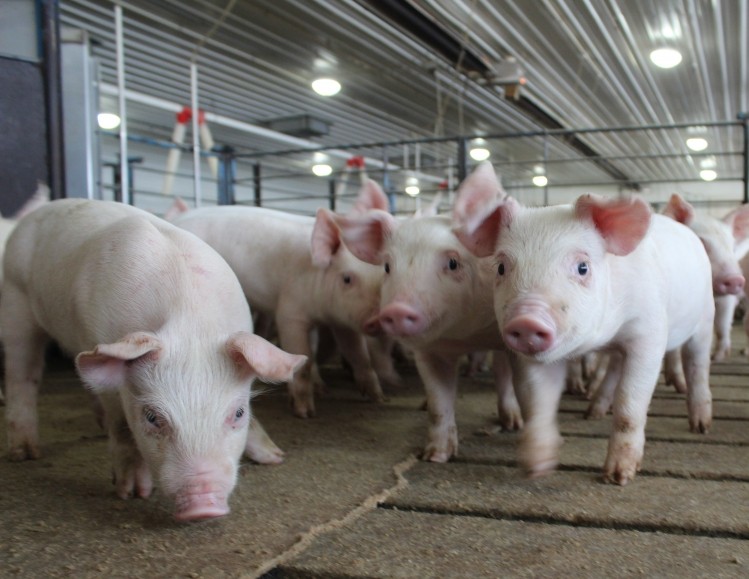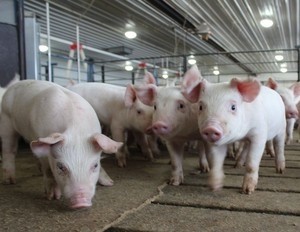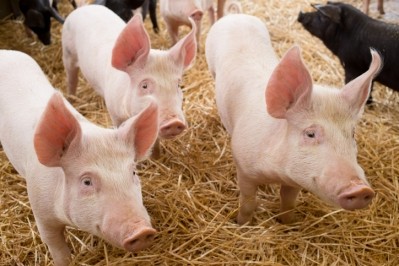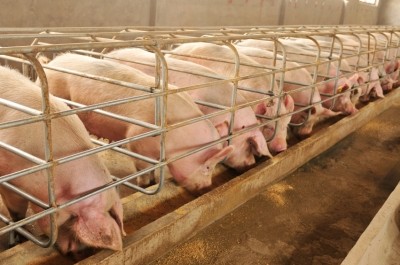Teagasc: Birth weight is king for getting top performance and feed efficiency in pigs

In an exclusive interview with FeedNavigator, Michael McKeon, regional pig specialist at the Irish Agriculture and Food Development Authority, said: “the big issue is that litter sizes are increasing but birth weights are falling. Birth weight is king for getting top performance and feed efficiency throughout a pig’s lifetime.”
Piglets put on 80% of their birth weight in the three weeks before they are born, making this an important target window for intervention.
“There is a big draw down of nutrients from the sow during these final weeks of gestation,” said McKeon.
Certain amino acid blends have been found to have a positive influence on the development of muscle fiber in piglets and Teagasc is working with several commercial organizations to test whether building amino acid blends into the sow’s feeding regime influences birth weight. McKeon said hard data on this research would be available next year.
Three, four or five week weaning?
Weaning age is another factor that contributes to weight gain, according to McKeon.
“The longer a piglet is left on the sow, the more weight it will gain, but the fewer litters per year per sow. It’s about striking a balance between piglet weight and sow productivity,” he said.
Teagasc has looked at the effects of weaning piglets until three, four and five weeks of age and concluded that four weeks is the optimum weaning age.
“If farmers can wait longer before weaning, enzyme development is more advanced which means less nutrients from cereal feed going into the hind gut and causing issues with e coli and salmonella,” explained McKeon.
He added that every day that a piglet can stay on the sow equates to an extra 4-500g in weight gain.
Gastro-intestinal health post-weaning
Intakes during the first couple of days post weaning are another critical point, as failure to eat and drink at this stage can do irreversible damage to a piglet’s gastro-intestinal health.
Piglets have microvilli - finger-like structures - on their small intestine, which assist the slow transit of food. If a piglet is not taking in solid food or water, the acid produced in the stomach moves into the small intestine and burns off the microvilli. Without these microvilli, food moves much faster and there is less time for the enzymes to break down the food and for the nutrients to be absorbed before being excreted.
“Once the microvilli are gone they don’t grow back, and this affects feed conversion. That is why it is critically important to get a piglet eating and drinking as quickly as possible,” explained McKeon.
He added: “When a piglet is on the sow, it will be taking in the equivalent of 700ml of water. After weaning, water intake can drop down to 300ml. The challenge is to get enough water or liquid into piglets that may not be used to water.”
To this end Teagasc recommends feeding liquid milk replacer for three to four days after weaning and exercising “attention to detail”, such as the use of liquid milk dispensers and ensuring the same teats and bowls are used as when the piglet was with the sow.
“These might sound obvious things but farmers overlook them and don’t realize what a traumatic event it is for a piglet to be separated from the sow and moved to a pen with other piglets it doesn’t know,” he said.



![As we look to the future, precision feeding programs will become more complex and will be based more and more on powerful predictive models: Karl Dawson [pic (c) istock.com]](/var/wrbm_gb_food_pharma/storage/images/_aliases/wrbm_medium/5/5/6/1/691655-1-eng-GB/Predictive-models-and-ingredient-interaction-insights-will-change-precision-nutrition-science-Alltech.jpg)












